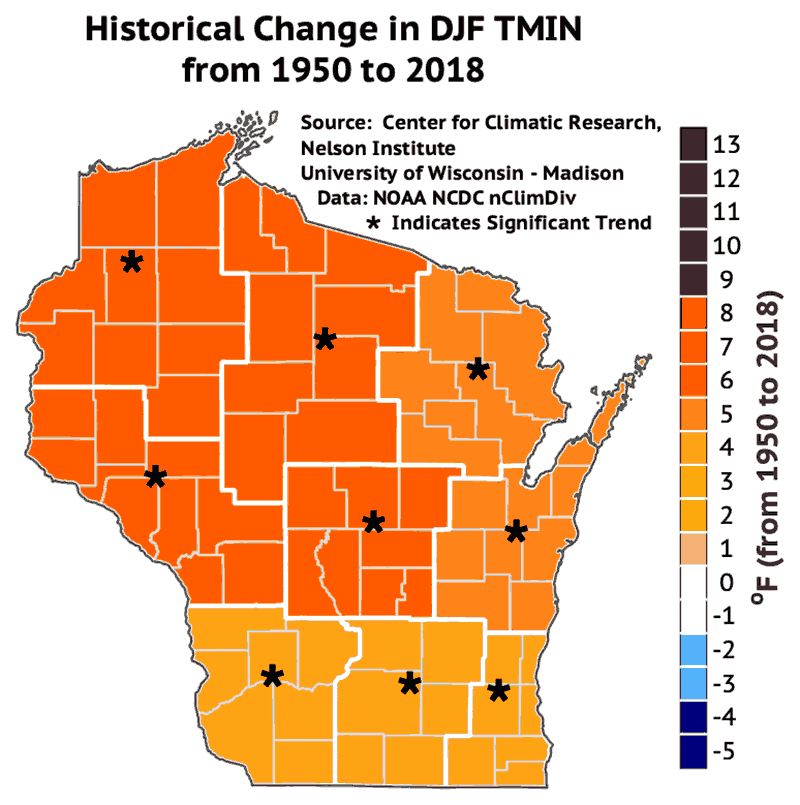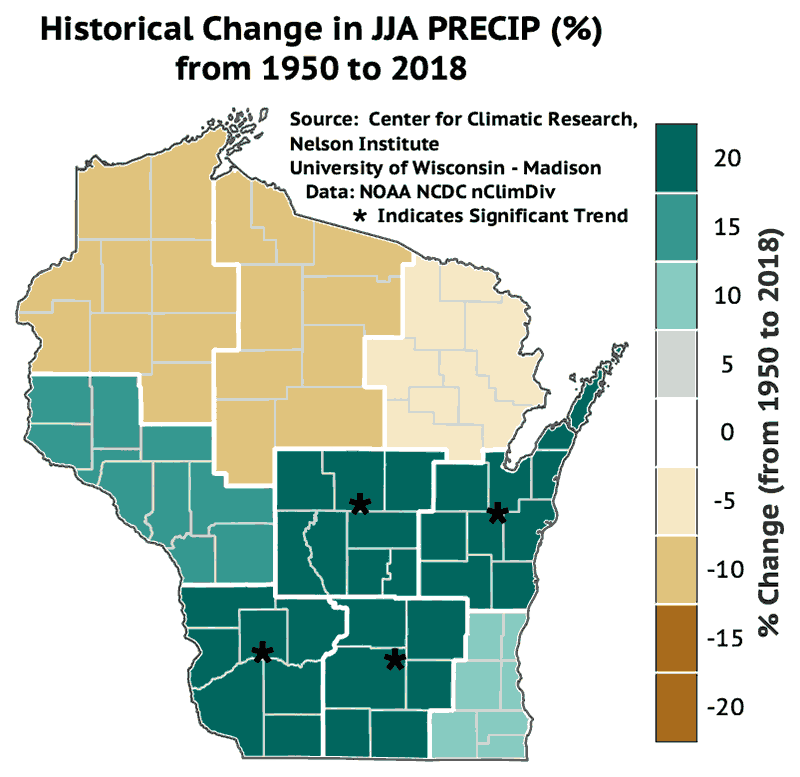Maple syrup producers across the Midwest have noticed changes in their sugarbushes in recent years, such as earlier tapping seasons and the arrival of new invasive and competing plant species and forest pests. In our August Maple Hour, we discussed the causes and consequences of these changes and what maple producers can do to adapt.
Stephen Handler, a climate change specialist with the US Forest Service, started the conversation with an overview of major climatic trends in northern hardwood forests. Here are some of the trends in Wisconsin:
- As summer growing seasons lengthen and temperatures rise, summer drought conditions are becoming more frequent.
- Warming is happening fastest in the winter and at night—average winter daily minimum temperatures have risen by 4–7 degrees Fahrenheit since 1950.
- Heavy precipitation events are becoming more common and more extreme.
- Since 1950, average summer precipitation has increased by 10–20% in the southern half of the state and decreased by 10% in the northern half of the state.

After Stephen’s presentation, I introduced our new sugarbush adaptation menu, created as part of my work as a project assistant on the Maple Syrup Program and a master’s student in science communication at UW-Madison. An adaptation menu provides concrete actions people can take to be good stewards of the land in response to environmental changes. It builds on your firsthand knowledge of the land by tying your observations to broader scientific findings and offering evidence-based adaptation strategies. As suggested by the word menu, it does not dictate the “best” approach—you choose which strategies make sense given your circumstances and goals.
Our sugarbush adaptation menu connects the climatic trends in the Upper Midwest to their impacts on maple syrup production. It is structured around eight current and future environmental changes that sugarmakers might encounter in the woods. The adaptation strategies provided include both forest management practices as well as sugarmaking technology and business ideas. Two strategies in particular have the potential to address a wide range of challenges:
- Encouraging diversity in your woods in terms of species, sizes, ages, and spacing will make the ecosystem more resilient to the many stresses it might face.
- Tapping red maples is worth considering because red maples can be just as good for sugarmaking as sugar maples and can flourish in a broader range of environmental conditions.
You can watch the full recording of the August Maple Hour below. And make sure to check out our sugarbush adaptation menu. You can view it online or download and print the PDF, and it has links to many resources to explore the ways that you can help your sugarbush thrive for many years to come.






